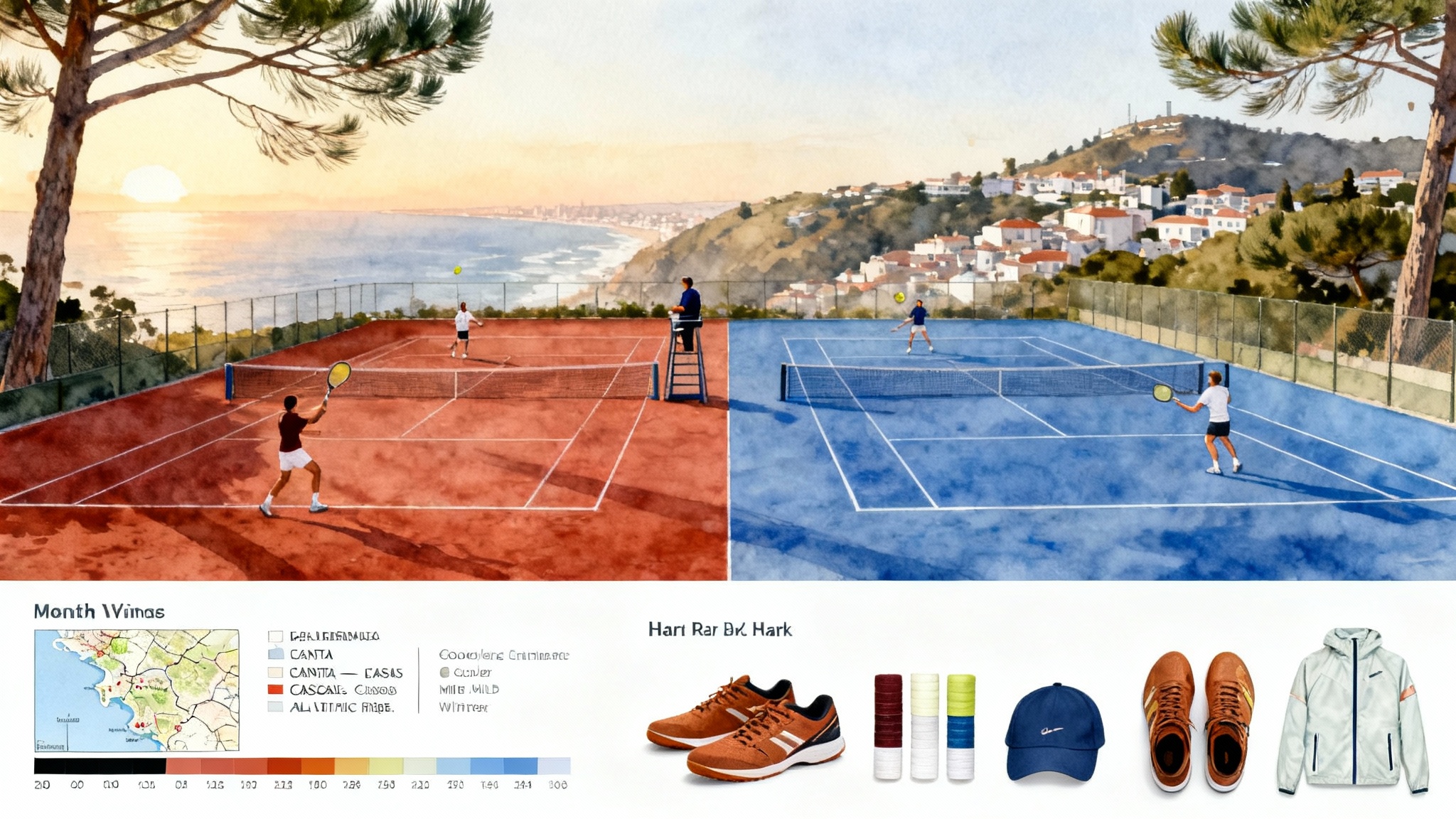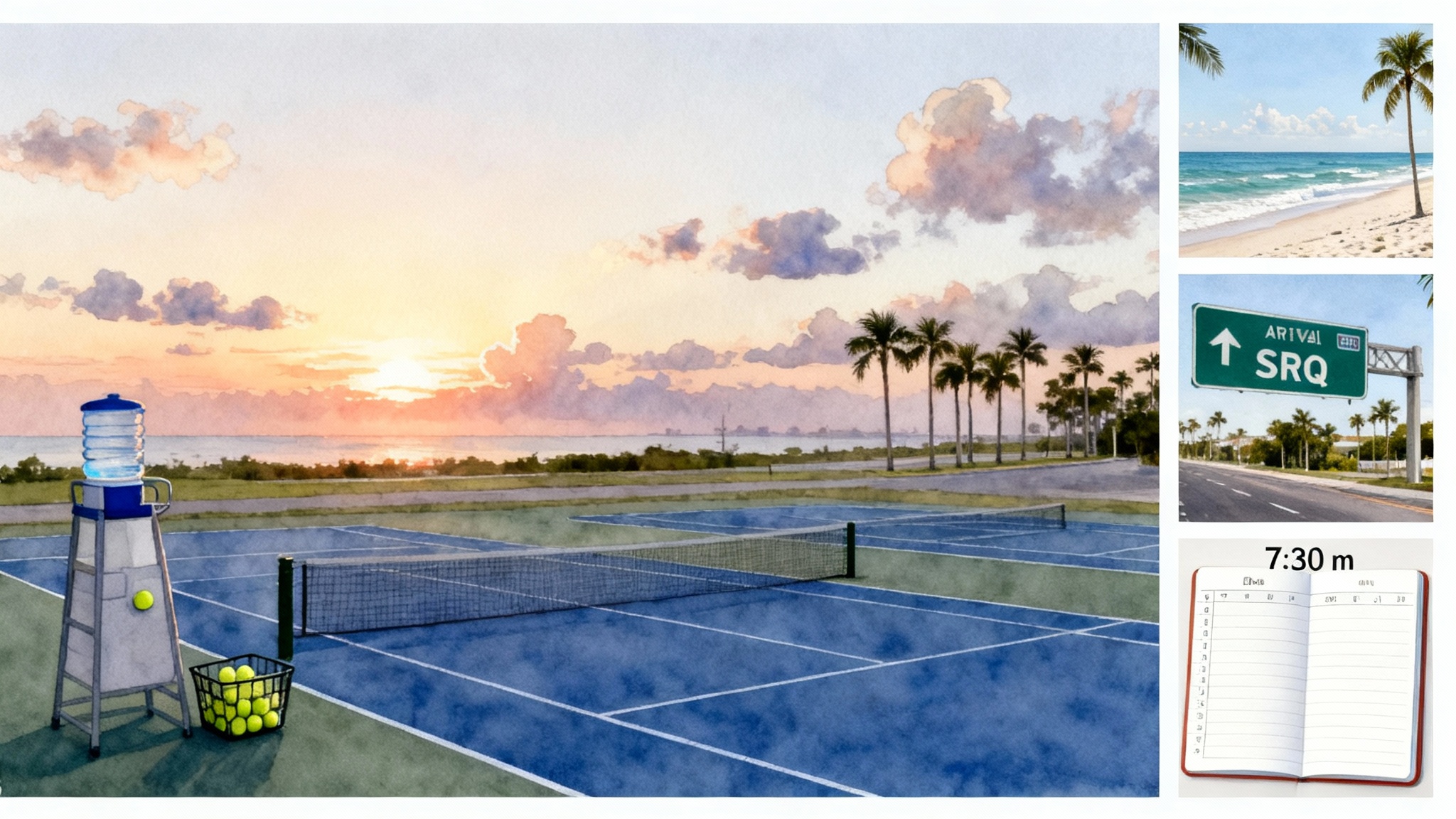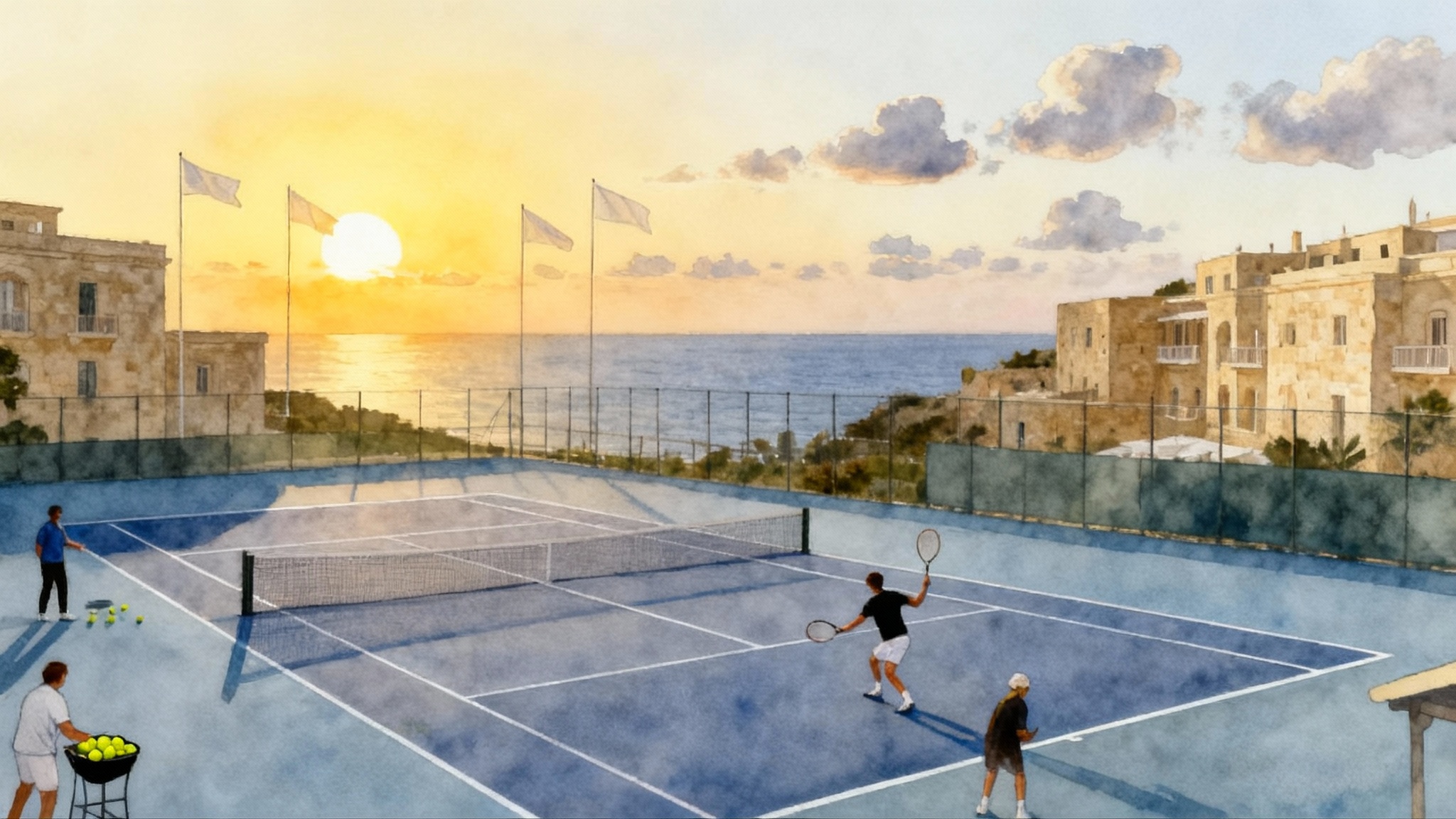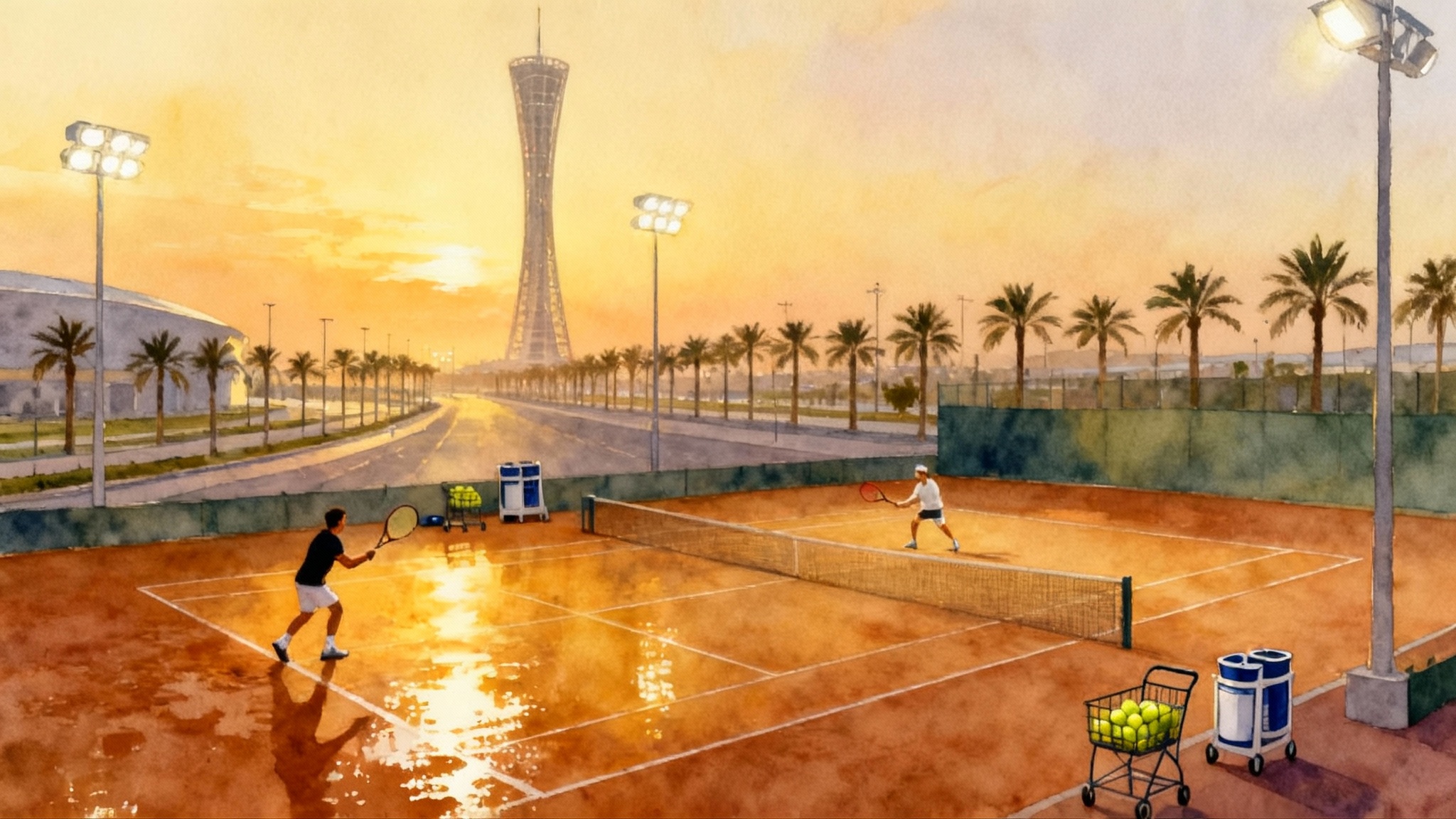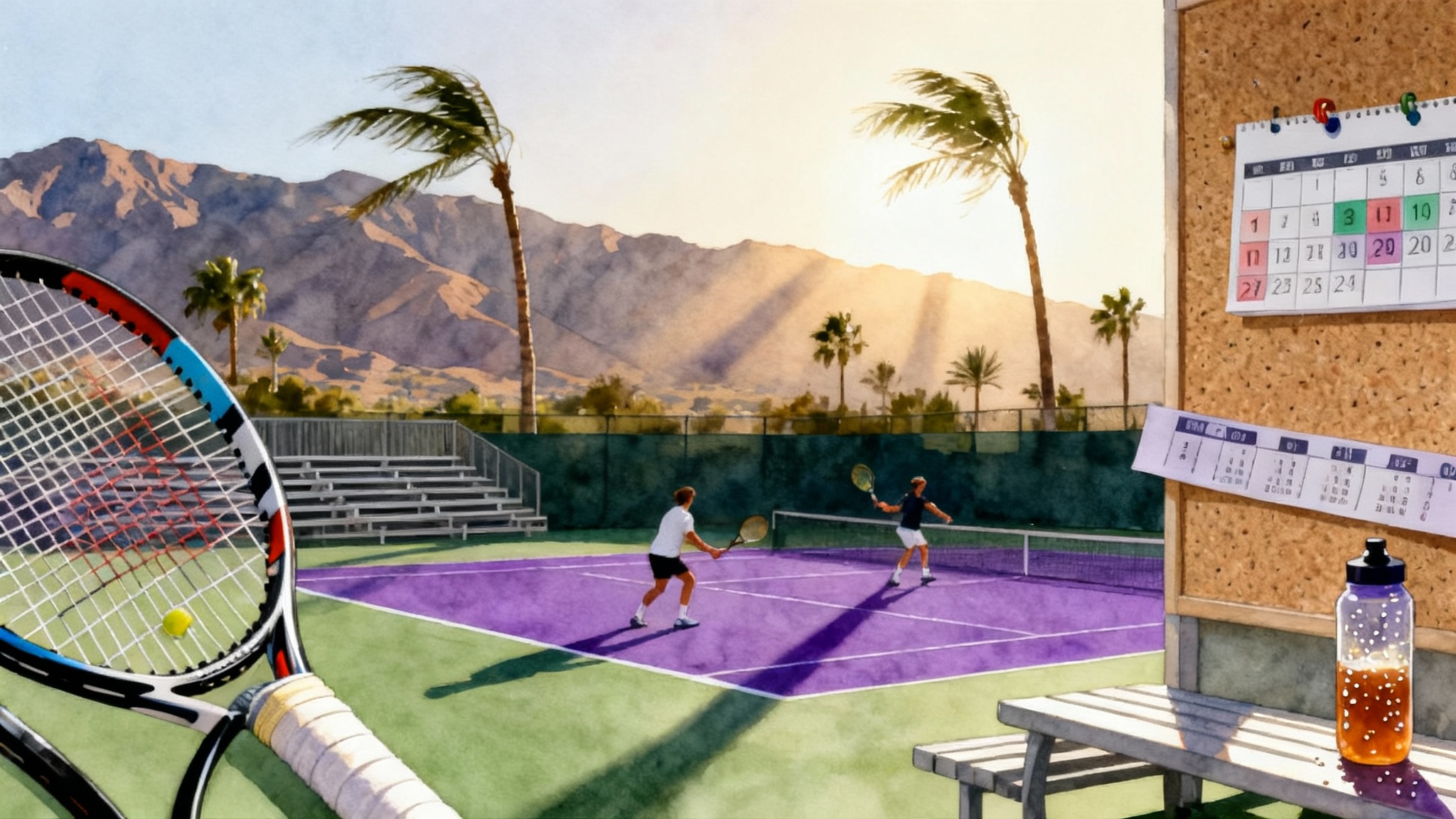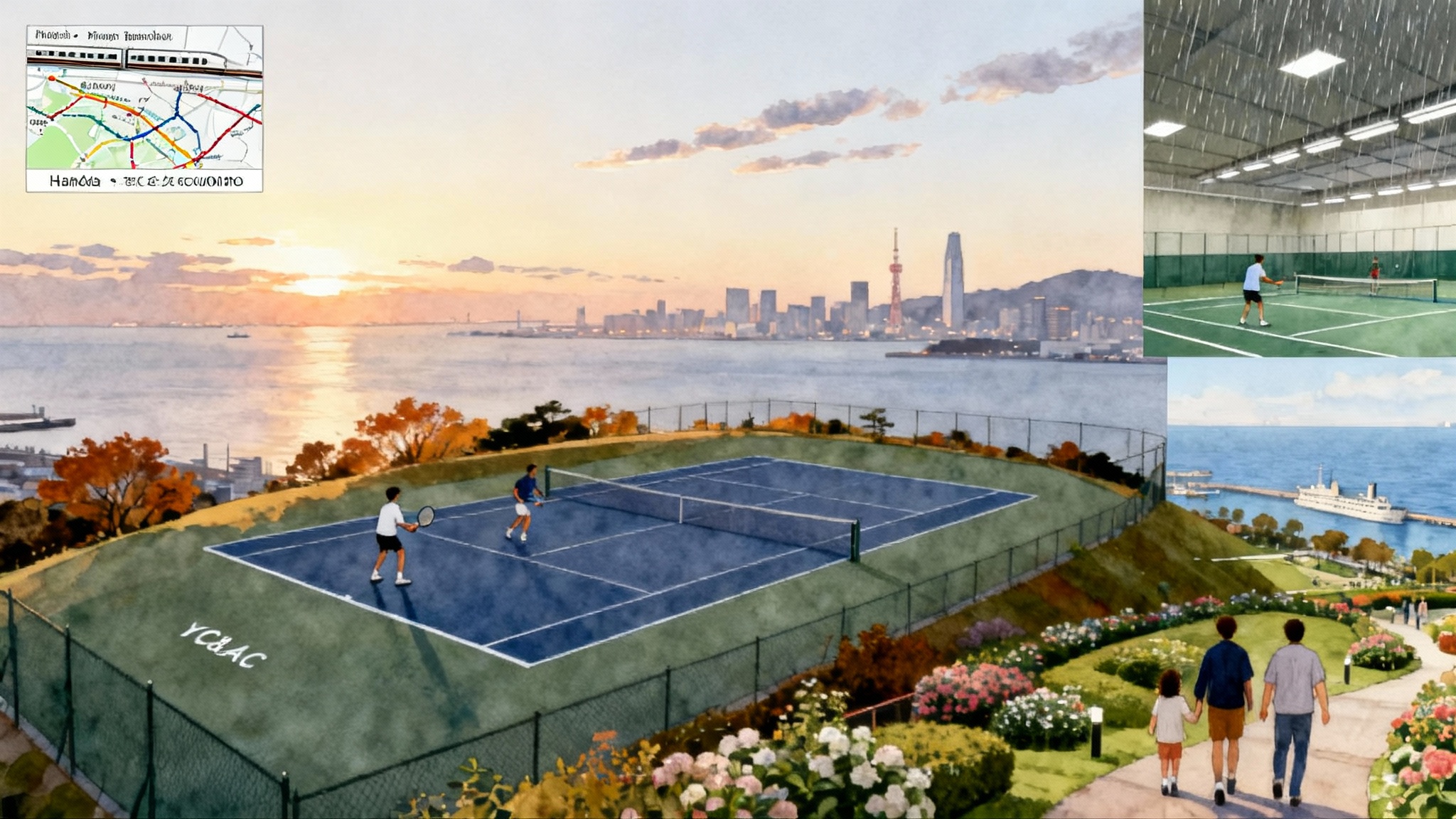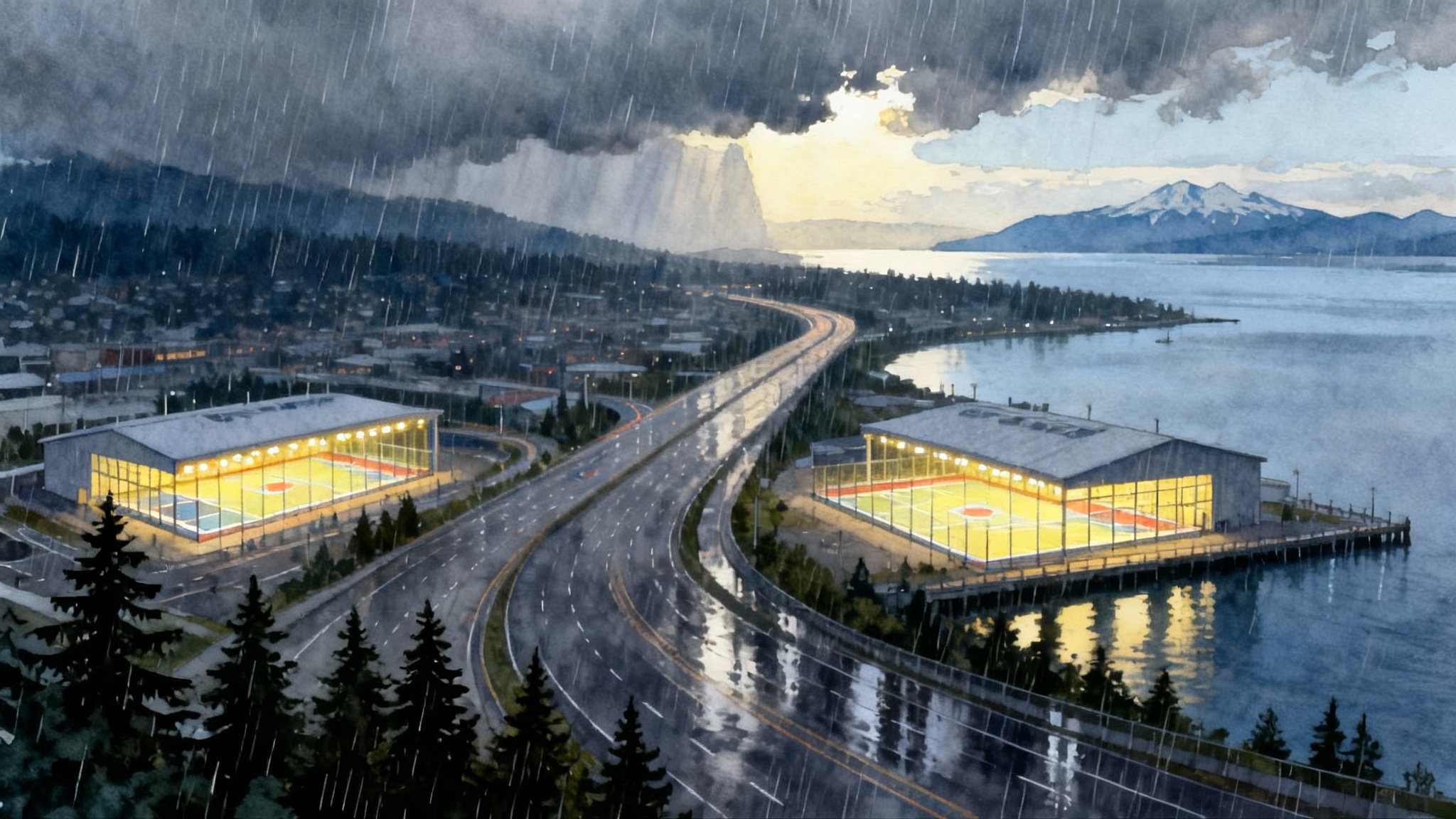Lake Garda Tennis Camps 2026: Ora, Peler, and Sportech Base
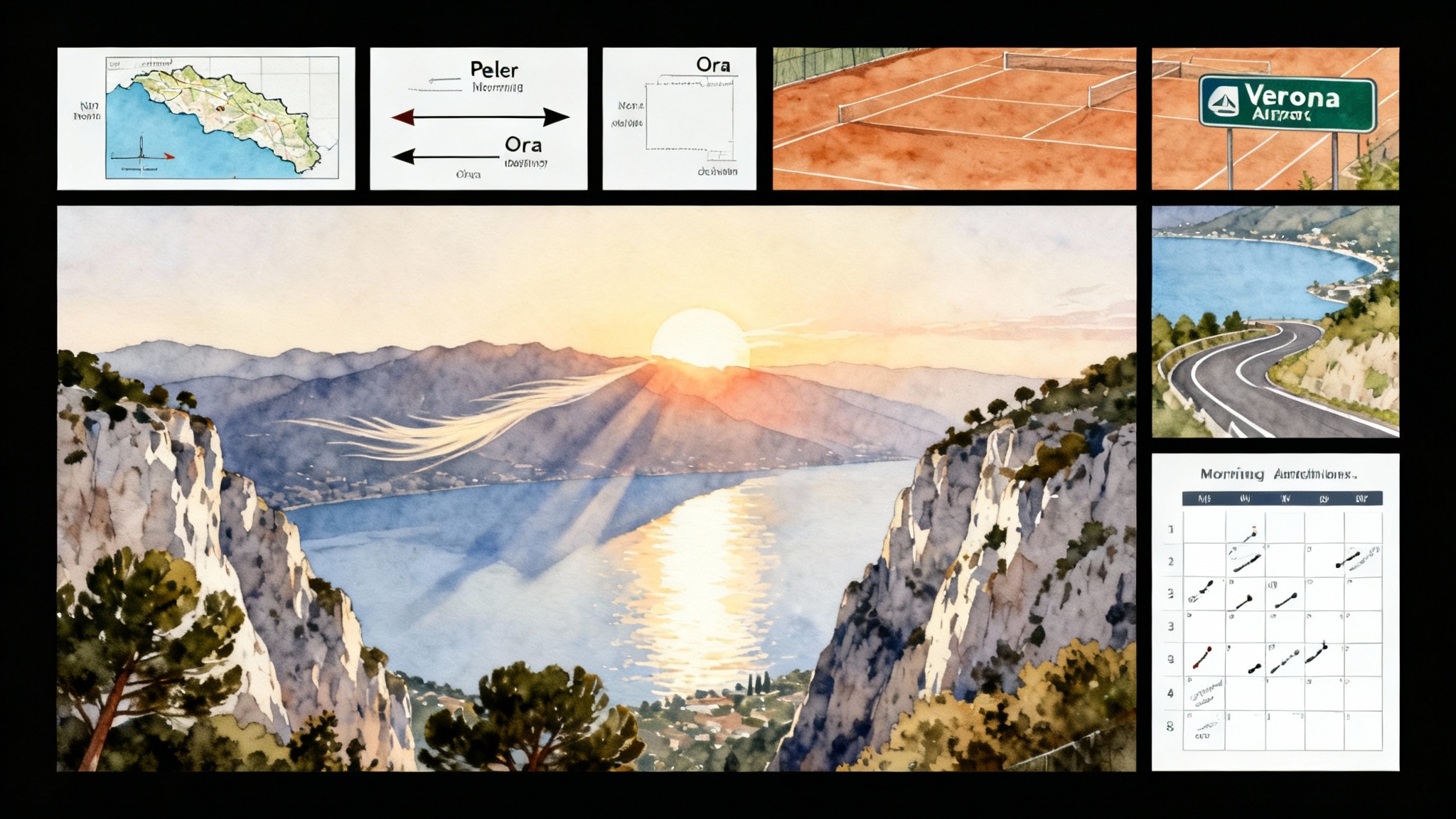
Why Lake Garda is the clay camp to circle in 2026
If you are drawing up a serious clay court block for May to September, Lake Garda belongs at the top of the list. The lake sits in a long north south corridor framed by limestone cliffs and Alpine foothills. That geography creates a reliable wind cycle and a cooler afternoon temperature profile that lets you stack volume without cooking your legs. Add a dense network of European red clay courts, family friendly towns, and easy air hubs, and you get a training base that feels purpose built for tennis. For complementary planning, see the Barcelona tennis hub 2025–26 and the Sintra–Cascais mild climate base.
This guide explains how the Ora and Peler winds shape court conditions, how to turn those hours into repeatable double sessions, and why Sportech Academy Tennis base in Tremosine makes a smart anchor for 2026. You will also find week by week planning notes, travel tips from Verona and Bergamo, and practical advice on stacking volume for both juniors and adults.
The Alpine microclimate that makes training safer
Lake Garda’s wind pattern is not trivia. It is a daily metronome that determines when balls fly, when topspin bites, and when your heart rate stays in the green. In simple terms, cool air drains from the mountains at night and warms over the lake during the day. The result is a dependable two part rhythm: Peler in the morning, Ora in the afternoon. Local sailors and windsurfers live by it, and tennis players should too. For a concise primer, the Garda tourism and sport pages explain the daily Ora and Peler winds with direction, timing, and seasonality.
- Peler: a north to south wind that shows up overnight and lasts into late morning. Courts feel brisk, the air is drier, and the ball stays a hair lower. This is prime time for footwork and pattern drilling because the bounce is predictable.
- Ora: a south to north breeze that fills from late morning into afternoon. It brings slightly warmer, moister air off the lower lake, which cools the felt and your skin, and that makes afternoon match play less punishing than you would expect in a continental summer.
Two immediate training payoffs follow. First, you can schedule technique heavy work in cooler, crisper morning air without battling heat stress. Second, the afternoon Ora spreads the heat and evaporates sweat more efficiently, which lets you play points and sets at real intensity without the risky spike you get on sealed, windless courts inland.
What this means for your weekly training rhythm
Think in blocks, not days. The lake rewards structure. Use mornings for dense, high ball count reps. Save afternoons for points, sets, and serve plus one patterns where decision making must keep up with footwork.
A practical summer day on clay at Lake Garda looks like this:
- 07:00 Wake, water, light breakfast with complex carbs and fruit
- 07:45 Warm up and band activation, 10 to 12 minutes
- 08:00 to 10:15 Technique block under Peler, 900 to 1,200 balls, 1 to 2 minute water breaks every 15 minutes
- 10:15 to 10:45 Mobility, a short jog, and recovery snack
- 13:00 Early lunch, hydration plan set for the afternoon
- 16:00 to 18:30 Match play window under the Ora, two fast sets or one full match with changeover hydration
- 19:30 Dinner and a 10 minute walk to keep the legs fresh
- 21:30 Lights out, screens off
This pattern looks ordinary. The difference is consistency. The winds repeat often enough in summer that you can build six to eight straight double session days without slipping into heat debt. That repeatability is the secret advantage of Lake Garda.
Your base camp: Sportech Academy Tennis, Tremosine
Tremosine sits above the western shore on a scenic plateau that catches the morning shade and the afternoon breeze. Sportech Academy Tennis base gives you what a volume block needs: quiet surroundings, quick access to a bank of European red clay, and staff who understand how to alternate drill density with smart match play. The altitude is modest by Alpine standards, which keeps ball flight normal. The plateau setting means slightly cooler nights and crisp mornings, perfect for footwork and rhythm work.
The area also helps athletes stay focused. You are close to the water and the towns of Limone and Campione, yet far enough from the lakefront rush to keep routines simple. That matters on day five when you want just the right balance of repetition and novelty so the brain keeps learning, not just repeating.
Travel logistics that save you hours
You can fly into two convenient airports:
- Verona Airport, also known as Valerio Catullo. The drive to Tremosine typically takes 90 minutes to a bit over two hours depending on traffic along the western shore. For schedules and routes, check the Verona Airport flight information before you book.
- Bergamo Orio al Serio Airport near Milan. Expect roughly two to two and a half hours by car to Tremosine, with peak Saturday traffic around midday in July and August.
Car hire gives the most flexibility, especially if you plan early mornings and evening swims. If you prefer trains, you have two workable pathways. From Verona Porta Nuova station, take a regional train to Desenzano del Garda then a bus along the western shore to Limone and up to Tremosine. From the north, ride to Rovereto, bus to Riva del Garda, ferry or bus to Limone, then up to Tremosine. Factor transfers into your arrival day, and avoid scheduling a heavy first session if you come by public transport.
Pack like the mountains might remind you who is boss. Bring light layers for mornings, a cap for the afternoon sun, and sandals for post session foot recovery. A compact headlamp helps if you find yourself stretching outside after dinner.
May to September, week by week
Every month around Lake Garda has a distinct training feel. Use it.
- May: Spring mornings can feel fresh, which is perfect for technical rebuilds. Plan two technique heavy weeks to groove spacing and height over the net. Keep match play in the two set range and prioritize decision drills over marathon sets.
- June: The pattern stabilizes. This is the sweet spot for a five week block with two heavier weeks, one lighter consolidation week, then two heavier weeks into early July. Double sessions are realistic for most players if hydration standards are met.
- July: Warmer air meets the afternoon Ora, which is exactly why the lake works. Shift morning sessions 30 minutes earlier, shorten the longest drill blocks by 10 percent, and keep the afternoon focused on serve returns, points, and competitive sets.
- August: Tourism peaks. Book courts and transport early. Use early mornings for your longest density blocks. If you are traveling with family, adopt a three on, one off rhythm so you can enjoy the lake without feeling guilty about missing a second hit.
- September: Golden light, steady winds, and slightly quieter roads. This is a great month for adults who want volume without crowds, and for juniors who need a tune up before autumn events.
Volume stacking for juniors and adults
The goal is not to survive a week. The goal is to leave with better patterns that hold under pressure. Volume matters, but the type of volume matters more.
- Juniors in growth phases: Set a weekly cap of 16 to 20 on court hours, not counting warm ups. Morning drill density can be high, but technique rules must be strict. Use 15 to 20 ball live ball patterns with clear constraints. Follow with shorter point play in the afternoon. If a player’s rating depends on match count, concentrate official match play into specific days rather than chasing a match every evening.
- College players and advanced adults: 18 to 22 on court hours can work if sleep and nutrition are clean. Alternate one day of 1,100 to 1,300 balls in the morning with a slightly reduced day of 800 to 900 balls. In the afternoon, target one full match or two fast sets with return and tie break emphasis.
- Developing adults: Aim for 12 to 16 hours weekly. Build the morning around basket work, serve and first ball chains, and footwork ladders. Keep afternoon points short and structured. Add a daily 20 minute mobility circuit.
Two simple metrics keep you honest:
-
Balls per hour: On clay, 400 to 600 balls per hour in drilling is common. If you are far below that, your density is weak. If you are always above it, your technique might be leaking.
-
Heart rate and perceived exertion: Use a wrist monitor or a simple 1 to 10 scale. Mornings should feel like a 6 or 7 with short spikes. Afternoons can touch 8 during sets. If a player wakes up at 7 or higher, shift the morning to technique only and shorten the afternoon.
Sample two week plan anchored at Sportech
Week 1, rebuild and rhythm:
- Mon: Morning crosscourt height control and depth, 1,000 to 1,200 balls. Afternoon serve targets, plus 8 game sets starting at 30 all.
- Tue: Morning heavy topspin forehand work and high backhand defense. Afternoon return plus two, short deuce games.
- Wed: Morning neutral ball tolerance, 20 ball count. Afternoon doubles patterns for footwork variety.
- Thu: Morning approach and finish, drop step patterns. Afternoon practice set with new balls.
- Fri: Morning serve day with second serve focus, basket plus live. Afternoon tie break ladder.
- Sat: Morning light hit and mobility. Afternoon family activity day.
- Sun: Full rest or 45 minute flush jog and stretch.
Week 2, consolidation and match play:
- Mon: Morning pattern into open court, 16 ball live. Afternoon two sets.
- Tue: Morning backhand line control and inside in decision work. Afternoon one set plus return games.
- Wed: Morning short ball attack with footwork ladders. Afternoon doubles tiebreaks.
- Thu: Morning serve plus one with targets, 80 percent pace. Afternoon one full match.
- Fri: Morning recovery drills and slice defense. Afternoon one fast set to 6 with no ads.
- Sat: Showcase match or ladder day. Evening swim and mobility.
- Sun: Travel or hike day.
Equipment and clay specific adjustments
Clay magnifies small decisions. Plan ahead and you avoid headaches.
- Strings: Full polyester at a softer tension works for many, but clay can be kind to a hybrid with a thicker gauge in the mains. Bring a reel and cut out rather than nursing dead strings. If you normally break after 8 hours, expect that to shorten with heavy spin in dry weeks.
- Shoes: Use a full herringbone sole for proper sliding and grip. Rotate two pairs and dump the clay after each session. Replace laces early if they pick up grit.
- Grips and towels: Pack more than you think. Afternoon Ora can leave the felt slightly damp, which transfers to the grip. Fresh overgrips keep the hand relaxed under pressure.
- Sun and hydration: Use mineral sunscreen applied 20 minutes before the session. Build a hydration plan with electrolytes before you arrive. One simple rule of thumb is 0.4 to 0.6 liters per hour for light players and 0.6 to 0.8 for heavier athletes, adjusted for conditions.
- Clay maintenance: Learn to brush and line sweep between sets. It resets footing and keeps ankles happy.
Recovery that lets you come back tomorrow
You do not get fitter from the session. You get fitter from the adaptation. Guard it.
- Mobility and eccentric strength: Ten minutes of calf eccentric raises, adductor sliders, and thoracic rotations each evening. Clay loves to punish tight calves and groins.
- Cold water exposure: The lake is a natural recovery tool. Five minutes waist deep after the afternoon hit calms the legs. Towel off, then walk ten minutes to rewarm gently.
- Sleep: Dark room, slightly cool air. The plateau makes this easy. Treat bedtime like a match start time. Lights out means lights out.
Family add ons that amplify the week
Lake Garda is not a tradeoff between training and family. It is a force multiplier if you plan it.
- Easy win activities: The Limone lakefront is a short ride from Tremosine and ideal for post dinner gelato walks. The lakeside cycle path offers an unforgettable view without a long grind. A ferry across to Malcesine turns a rest afternoon into a mini adventure.
- Mountain flavor: The Tremosine plateau has gentle trails with lake views that children enjoy. A one hour loop at golden hour is enough to reset the brain after drills. If you have a full rest day, take the cable car up Monte Baldo from the east side for cool air and simple walks.
- Water time: Torbole and Riva del Garda on the northern shore host sailing and windsurf schools that run safe beginner sessions in the afternoon Ora. Book early in July and August.
- Theme park day: If you need a big day for the kids, Gardaland near Peschiera del Garda is an easy south lake excursion. Plan it on a consolidation day so your legs do not pay the price.
The trick is to place these activities on either the lightest session day or the full rest day. That way family time does not cannibalize recovery or cause a sloppy next morning.
Booking and budget timing
For 2026, book courts and accommodation early, especially for any weeks that touch late June through mid August. If you aim for May or September, you can often secure better rates and quieter roads, which helps athletes who do not love crowds.
Set a transport budget that includes tolls and fuel if you rent a car. The western shore road is scenic and slow in places, so add time rather than cutting it close to session starts. If you go car free, budget for a few taxis to bridge gaps between buses, especially on arrival and departure days.
A quick checklist before you lock it in
- Choose dates that match your goals. May for rebuilds, June for volume, July and August for match fitness with structure, September for polish.
- Anchor at Sportech Academy Tennis base so your morning and afternoon windows align with the winds.
- Book flights into Verona or Bergamo and plan the last leg with enough margin for a calm arrival. Check the Verona Airport flight information for schedules.
- Decide your weekly on court hour target and write it down. Then pull one small lever each week, such as adding a daily return game or a tie break ladder.
- Bring two pairs of clay shoes, a string reel, a hydration plan, and a light jacket for mornings.
- Sketch a family plan that pairs light training days with one or two simple lake or mountain activities.
The bottom line
Lake Garda rewards planners. The mountains breathe, the lake moderates, and the wind beats a steady rhythm that lets you build real tennis volume from May to September without boiling your engine. Anchor at Sportech Academy Tennis base, respect the morning Peler and the afternoon Ora, and your sessions will stack cleanly day after day. Do that for two to five weeks, and you leave not just fitter, but with patterns that stick when the score gets tight. That is what a great summer block should deliver.
